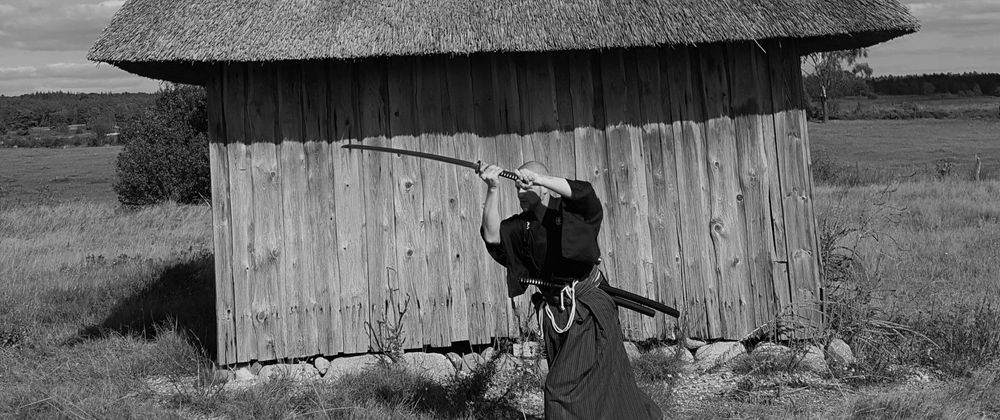Age-Kesagiri 上げ袈裟斬り - Why the ascending cut is more than just a makeshift solution
When we talk about kesagiri - the famous "monk's cut" - the image that often arises is of a diagonal strike that divides the opponent's body like the edge of a Buddhist kasaya.
Charming, but often simply wrong in practice.
This is because many of these diagonal cuts are not aimed at the torso at all, but at something much smaller and often more decisive in combat: the sword arm.
That's why I personally often prefer to use the sober term nanamegiri - diagonal cut.
But: tradition beats verbiage. In most ryūha, kesagiri is the standard technical term. So let's stick with it.
Why age kesagiri is technically trickier than it looks
An ascending cut from the hip up over the shoulder sounds elegant - but in reality it's a bit of a biomechanical puzzle.
1. the leg position determines safety
If you cut from the bottom right to the top left, for example, the left leg should ideally be in front.
Why?
- Your own leg does not block the blade
- Injuries are avoided (yes, this does happen)
- the hasuji 刃筋 - the alignment of the cutting edge - can be kept much cleaner this way
Correct hasuji is one of the biggest challenges when making ascending cuts. Arms and wrists like to "get in their own way".
2. sometimes you need more reach
In free sparring(kiken 撃剣), the classic "kote snipe" - a quick cut to the forearm - is a common use of age kesagiri.
Here, the position is sometimes deliberately inverted: the other foot is in front to extend the reach a little further.
Morote or katate? - When two hands are too many
In some kenjutsu lines, age kesagiri is performed asymmetrically:
- from right to left: two-handed (morote 諸手)
- from left to right: one-handed (katate 片手)
Reason: The wrists would otherwise cross and interfere with each other - and any blockage in the flow of a cut is a risk.
The uncomfortable truth: ascending cuts have little power
That's harsh, but true:
- they generate significantly less impact energy than a downward cut
- they require more preparation, more structure and more finesse
- they do not forgive mistakes in the hasuji
So why use them at all?
The tactical strength of the Age-Kesagiri
Quite simple:
It is difficult to parry.
A cleanly executed age kesagiri can slide under an opponent's parry, elegantly bypass the guard and exploit the smallest opening.
Like water finding its way - silent, inconspicuous, but effective.
A classic example of Inyo: a "weak" cut that suddenly becomes strong through timing and angle.
Conclusion
The Age-Kesagiri is neither a power cut nor a show piece.
It is a tool blade, not a sledgehammer:
- subtle
- fast
- difficult to block
- and excellent for delivering small but decisive strikes
Those who master it understand an important dimension of battojutsu:
Sometimes it's not the hardest hit that wins, but the inconspicuous angle that whispers past cover.
